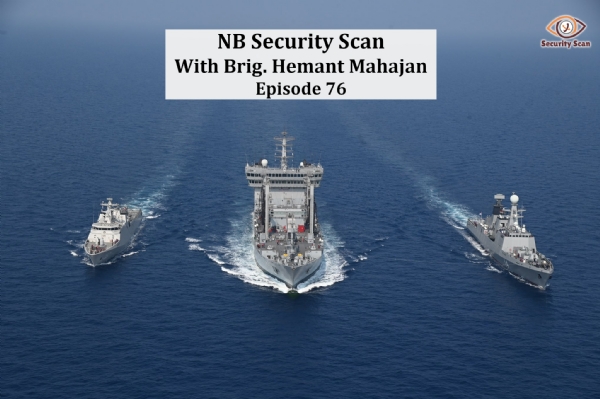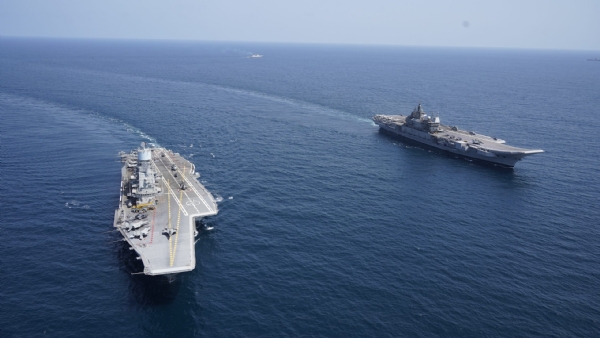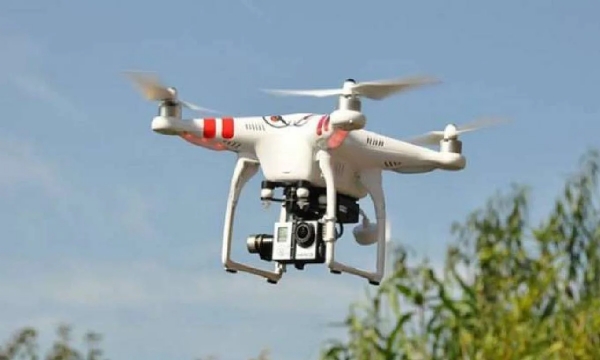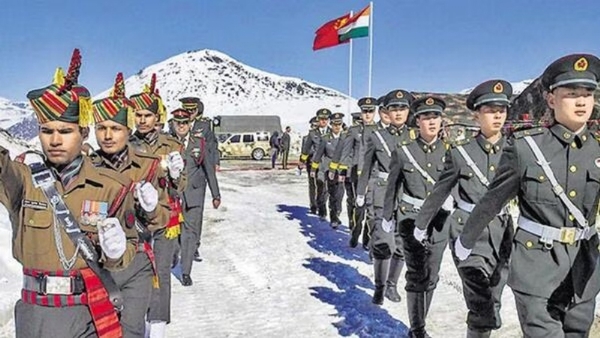#SecurityScan 76: Milan 2024 in Vizag, IAF's fresh Sukhoi order & more
Total Views |
This article is a summary of important events that have taken place in last one week affecting, India's national security.

News In Brief
India hosts global intel chiefs' meet
Global intelligence chiefs are meeting in Delhi for their annual gathering, focusing on counterterrorism efforts and discussing security challenges with global implications. The two-day meeting aims to foster cooperation in combating transnational crimes such as cyber threats, terrorism, and terrorism financing.
Trump and NATO
Former US President Donald Trump said at an election rally a fortnight ago that he once told a NATO leader that he would let Russian President Vladimir Putin “do whatever the hell he wants” to any NATO member that does not increase its defence spending to a minimum of 2 per cent of its GDP.
Trump, by his own admission, told the NATO ally, “No, I would not protect you. In fact, I would encourage them (the Russians) to do whatever the hell they want. You got to pay. You got to pay your bills.”
Trump has no love lost for NATO, the North Atlantic Treaty Organization, because he feels that it has no relevance for the US and that the US alone pays for the protection of smaller nations against possible attacks by Russia or any of its allies without any reciprocal gesture from the Europeans.
A Strategic Approach to Red Sea Security By Iran
Iran did not create the Houthi movement, but it has long seen it as useful. The Houthis have been a low-cost way to give Iran additional regional reach. They represent a modest investment in regional forces that reject the legitimacy of the status quo.
Countering External & Internal Security Challenges
India Army Raising 18 Corps to strengthen its posture in Cenral Command on Chinese border
Despite efforts to maintain stability, recent deployments of substantial military assets by both India and China have underscored the sensitivity of the LAC.
In a strategic move, India has redirected attention to the eastern front, particularly its border with China. However, recent developments have prompted a reassessment of priorities, with a shift towards addressing security challenges along the LAC with China.
The Indian Army's response involves a major restructuring effort, converting an area headquarters into a corps headquarters, indicating a significant upgrade in military capabilities. The Bareilly headquarters, known as Headquarters Uttar Bharat, has been reinforced with three brigades and an infantry division, reflecting India's commitment to enhancing defense capabilities in the region.
This transformation includes elevating the Bareilly headquarters into a fully functional corps, with the proposed 18 Corps anticipated to comprise three divisions and potentially up to 45,000 soldiers. This strategic realignment demonstrates India’s proactive approach to address security challenges posed by China along the disputed border.
India remains vigilant, recognizing the strategic significance of the LAC in its broader geopolitical context. As India emerges as a prominent economic power, it faces increasing pressure and scrutiny from China.
Indian Army plans Rs 57,000 crore project to replace 1,800 aging Russian T-72 tanks with advanced AI battle machine
The Indian Army, with 12 lakh personnel, is gearing up to upgrade its tanks and introduce new ones, in response to reports on tank vulnerabilities. Senior officers attribute the heavy losses of Russian tanks in Ukraine to poor tactics, highlighting the need for combined-arms operations. A mega project worth Rs 57,000 crores aims to produce 1,770 Future Ready Combat Vehicles (FRCVs) to replace old T-72 tanks, starting in 2030. These FRCVs will feature advanced technologies like AI, drone integration, and active protection systems.
Lt Gen Upendra Dwivedi assumes charge as Vice Chief of Army Staff
Lieutenant General Upendra Dwivedi has taken over as the new Vice Chief of Army Staff, succeeding Lieutenant General MV Suchindra Kumar. Previously serving as the Northern Army Commander, Lt. Gen. Dwivedi is now positioned as the potential candidate to assume the role of Army Chief after General Manoj Pande's retirement on May 31. He paid his respects to fallen soldiers at the National War Memorial and received a guard of honor before assuming his new responsibilities.
Indian Navy to carry out major twin aircraft carrier operations off west coast in March

The Indian Navy is going to carry out major operations involving the fleets of both of its aircraft carriers off the west coast in the next ten days, Admiral R Hari Kumar said on Sunday.
Navy clears deal for 31 Predator Drones from US, contract signing expected in coming months
Navy chief Admiral R Hari Kumar has announced that the Defence Acquisition Council has approved the purchase of 31 Predator drones from the US, with a contract signing expected in the coming months. The deal, valued at approximately USD 4 billion, will see 15 drones operated by the Indian Navy, while the Army and Air Force will operate 8 each. This procurement is part of India's efforts to bolster its maritime capabilities and protect national interests.
Chief of Naval staff R Hari Kumar inaugurates Nibe Defence and Aerospace Ltd
Admiral R Hari Kumar, Chief of Naval Staff, inaugurated the new manufacturing plant of Nibe Defence and Aerospace Limited in Pune, emphasizing the Indian Navy's role in promoting self-reliance in defence production. The event highlighted Nibe's contributions to various defence projects and the importance of advanced equipment in achieving self-reliance. The inauguration also included announcements about upcoming naval operations, showcasing the navy's capabilities and preparedness.
Milan 2024: War exercise including 50 Navies kicks off in Vizag
Milan 2024, the Indian Navy's biggest multilateral naval exercise, has begun in Vizag. The Harbour Phase, from February 19 to 23, features a city parade, maritime seminar, tech expo, and various events. The Sea Phase, from February 24 to 27, includes air defence, anti-submarine, and anti-surface warfare drills. INS Vikrant, INS Vikramaditya, and other warships will be showcased. Traffic restrictions are in place, with heavy vehicle movement limited in specific areas.
IAF displays firepower in Exercise Vayu Shakti with Rafale, LCH Prachand among 120 aircraft
The Pokhran range close to the India-Pakistan border in Rajasthan's Jaisalmer on Saturday witnessed the Indian Air Force's full spectrum display of combat and fire capabilities as part of its Exercise Vayu Shakti-2024. Over 120 aircraft of the IAF, including Rafale, Su-30 MKI, MiG-29, Mirage-2000, Tejas, C-17 and C-130J, took part in the exercise, keeping with the tagline 'lightning strike from the sky.
IAF's Sukhoi fighter jets to get a Rs 60,000 crore booster: Here are all the upgrades for the new Su-30MKI
The Defence Ministry has approved a Rs 60,000 crore upgrade of India's Su-30MKI fighter jet fleet, led by HAL and supported by DRDO. This project aims to enhance the aircraft's capabilities with new radars, mission control systems, and weapon systems, reflecting India's push for self-reliance in defence manufacturing. The upgrade will include the integration of indigenous systems, such as a new radar system and electronic warfare capabilities, improving air-to-air and air-to-ground targeting.
The mainstay Su 30MKI fighter jet fleet is set to undergo a comprehensive upgrade worth ₹60,000 crore. The upgrade will include new radars, mission control systems, electronic warfare capabilities, and integration of new weapon systems. Hindustan Aeronautics Limited, with support from DRDO, will lead the upgrade with heavy participation from the private sector.
How India Can Become a Drone Hub

“India is in the process of acquiring 31 higher-end MQ9B Predator armed drones from the United States at an approximate cost of Rs 2.5 lakh crore. The deal was announced during Prime Minister Narendra Modi’s visit to the US in 2023. The Navy already operates two unarmed Predator drones, which are on lease, at the Rajali naval air station in Tamil Nadu. The new acquisitions will be apportioned to the three Services with the Navy getting the majority share. Apart from the political message of reliance on the US for major weapon systems, it also signals that Atmanirbharta is not currently feasible in this class of weapon systems.”
How exactly do we go about getting our drones infra in place? If more indigenous products are going to be developed, the government will also have to increase its budget to procure the items on offer. The interim defence budget allocation and the government’s allocation for capital expenditure do not indicate any steps to meet that need. Statistical jugglery apart, when one takes inflation and changes in foreign exchange rates into account, the capital budget will fall short on the demand side. Until now, the structural problem has mostly been on the supply side.
Govt creates about 24K deputation reserve pool in central armed police forces, Assam Rifles
The Union government has sanctioned the creation of a 24,000-personnel deputation reserve within the existing manpower of the five central armed police forces and Assam Rifles. The Ministry of Home Affairs (MHA) issued an order for the creation of a 23,958 'deputation reserve' in the CRPF, BSF, ITBP, CISF, SSB, and Assam Rifles. These forces are deployed for various internal security duties, including counter-terrorist operations, border guarding, elections, and maintaining law and order.
India's first spy satellite made by local private player set for SpaceX liftoff
India's first military grade spy satellite, manufactured by the domestic private sector, is ready and has been shipped for launch on a SpaceX rocket. The ground control in Bengaluru will direct the satellite's path and process imagery. It will provide imagery with 0.5-metre spatial resolution. The satellite has been built in partnership with Satellogic.
#COUNTERING CHINESE MULTI DOMAIN , GREYZONE, HIGHBREED WARFARE
China-Taiwan tensions surge as Beijing increases patrolling following fishermen's deaths
Tensions rise in waters near Taiwan as China intensifies patrols after two Chinese fishermen drown. China's coast guard vows to enhance patrols, raising concerns of conflict. The incident occurred near Taiwan's Kinmen islands, with Taiwan accusing the fishermen of trespassing. China condemns Taiwan's actions, blaming the ruling party. Taiwan maintains its coast guard acted lawfully. The incident reflects broader tensions in the Taiwan Strait, with China applying pressure on Taiwan since 2016. Previous joint maritime drills have been held during more cordial times.
New Zealand Navy Chief Admiral David Proctor receives Guard of Honour in Delhi
Rear Admiral David Proctor, Chief of the Royal New Zealand Navy, received a Guard of Honour in Delhi and met with Chief of the Naval Staff, Admiral Hari Kumar. The two naval leaders exchanged greetings, highlighting the cordial relations between India and New Zealand, established in 1952. Admiral Proctor also paid respects at the National War Memorial. New Zealand has identified India as a priority country for trade, aiming to address trade barriers and stimulate demand. Bilateral trade stood at USD 1 billion in 2022-23, with efforts to enhance business dialogue and remove trade obstacles.
"Western countries have long preferred to supply Pakistan, not India": EAM Jaishankar reasserts defence cooperation with Russia
The External Affairs Minister reaffirmed India's defence and trade cooperation with Russia, noting a shift in arms supply trends over the past decade. He highlighted the imbalance in global supply chains and called the current economic model unstable and unfair, emphasizing the need for change. The minister also discussed the multiple stresses facing the global order, including COVID-19, conflicts in Ukraine and Gaza, NATO's Afghanistan withdrawal, and climate disruptions. India and Russia's strategic partnership, particularly in defence and energy, has remained strong, with Russia's assistance in nuclear technology and oil imports playing key roles in advancing India's capabilities.
India, China hold fresh round of military talks

India and China have agreed to maintain peace and tranquility in border areas along the Line of Actual Control in eastern Ladakh during a recent high-level military talks. However, no clear forward movement was made in resolving the over three-and-a-half-year friction points. The 21st round of the India-China corps commander level meeting was held on February 19, with both sides sharing their perspectives and committing to maintain communication through military and diplomatic mechanisms.
China rails against EU’s train subsidy probe – will relations be thrown off-track?
The EU has begun an investigation into subsidies a Chinese train maker received in its bid for a contract, upsetting already strained relations
Train probe comes soon after anti-subsidy inquiry over China’s electric vehicles, suggesting scrutiny unlikely to let up.
Sustaining the U.S.-Philippines-Japan Triad
China’s aggression in the South China Sea and increasingly aggressive posture toward Taiwan continue to pose a threat to the rules-based order in the Indo-Pacific region. Recognizing the threat posed by Chinese revanchism, Japan, the Philippines, and the United States are working to deepen and better network their alliances. How can these partners better coordinate on a range of issues, including Beijing’s illegal behavior in the East and South China Seas and possible Taiwan contingencies? It is imperative that the three partners deepen strategic, military, and economic coordination to better understand and prepare for the roles each might play in a crisis.
Supply Chain Security-The U.S. Military and NATO Face Serious Risks of Mineral Shortages
NATO militaries could face shortages of critical minerals, especially if U.S.-China tensions escalate. Stockpiling could prepare NATO for a crisis.
In a possible U.S.-China conflict, overcoming mineral shortages may demand more than simply increasing available supply. The United States and other NATO countries should therefore consider mineral substitution and rationing to alleviate the pressure on the production of certain minerals. For example, depleted uranium can be substituted for alloyed steel in the production of 120-millimeter tank projectiles without a significant decrease in their effectiveness. In the case of a supply strain, the government could require defense contractors to replace alloyed steel with depleted uranium in that munitions class. During World War II, the U.S. military temporarily replaced brass—a copper-zinc alloy—with steel in cartridge cases; without such a substitution, the U.S. Navy said, it “probably would have been virtually impossible to wage a modern war with the supplies of copper . . . then available in this country.”
The history of the twentieth century suggests that absent such actions to strengthen mineral supply chains, the United States and NATO could be ill prepared for a world more reliant on batteries and renewable energy technologies—let alone a conflict with the world’s mineral superpower, China.
World At War,Ukraine War,Hamas War-Lessons or India
Red Sea ballistic missile attacks trigger Asian interest in defences
The use of anti-ship ballistic missiles (ASBMs) in the Red Sea has piqued Asian interest in defense systems to counter them, experts and industry officials report. Despite the challenges posed by China's substantial ASBM arsenal, recent U.S. Central Command (CENTCOM) releases highlight 48 ASBMs and 12 interceptions in the Red Sea since November. This has led to increased demand in Asia for integrated air and missile defense systems, including sensors, weapons, and command-and-control systems. However, challenges remain, particularly in countering small, "low-end" threats like drones, which have been used alongside ASBMs in the Red Sea.
Russia Might Win in Ukraine
The conflict between Russia and Ukraine, now entering its third year, has evolved into a protracted struggle with significant implications. Despite initial predictions of a quick victory for Russia, the conflict has become a prolonged and draining endeavor. Russian President Vladimir Putin appears to be banking on Western support for Ukraine waning over time, while maintaining steady military pressure. Putin has expressed a desire to negotiate an end to the fighting but insists on retaining Russia's gains. The conflict has strained Russia's resources and society, with a recent crackdown on dissent highlighting the Kremlin's authoritarian tactics.
Last year at this time, Russia appeared on the verge of a disastrous defeat as Ukrainian forces equipped with advanced Western weaponry prepared to launch a powerful counter-offensive, hoping to sever the land bridge between Crimea and Russia.
Putin’s position has strengthened immeasurably since then. A tenacious defense blunted the Ukrainian offensive. Russian troops have gone on to make their own gains, recently seizing the Ukrainian stronghold of Avdiivka. Most importantly, Republicans in Congress are blocking a crucial $60 billion aid package for Ukraine. With Russia’s weapons factories humming and Western aid drying up, the odds of Putin achieving something he can claim as a victory in Ukraine are rising.
--


